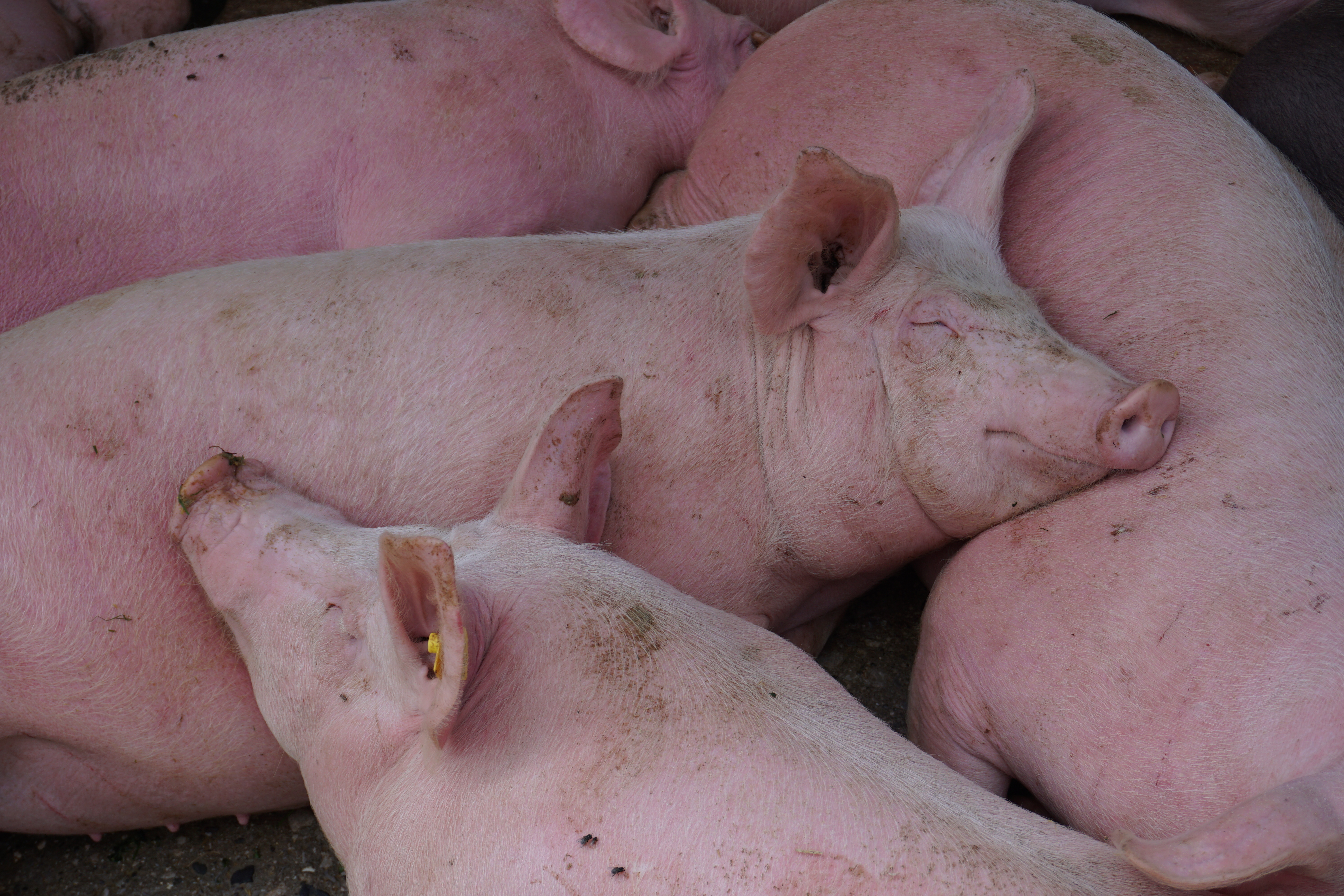



Finding common ground among the variety of US pig production systems
Variations in infrastructure, management practices and square footage of personal space don’t have to mean ‘opposite corners of the earth’ extremes when it comes to pig farming, especially where animal welfare is concerned.The variety within the US pig industry touches extreme points on a panoramic landscape, highlighting equally – century old family farms and gleaming technologically advanced computerised structures.
But variations in infrastructure, management practices and square footage of personal space don’t have to mean ‘opposite corners of the earth’ extremes. The use of gestation crates is a perfect example.
Since the 1970’s, these crates have been a staple of hog production units throughout the world. Today, they remain the standard in over 75 percent of the farms in the US according to a recent National Pork Producers Council report. Some individual states have banned differing forms and degrees of confinement, but the numbers of pigs affected by these legislations represent less than 10 percent of the country’s hogs.
Again, variation doesn’t have to mean a firm "yes" or "no" when it comes to gestation crate use. When coming to prominence decades ago, crates allowed larger numbers of sows to be raised and managed more precisely on an individual basis, including feeding each animal exactly what was best. The crates kept sows separate and safe at critical times when hormonal changes before and after insemination made them more susceptible to aggression and fighting. All with fewer staff.
With ever-increasing world population levels, more and more pressure has been placed on the shoulders of agricultural producers to generate more pork without sacrificing the care of the animal. It can be a delicate balancing act.

Belstra Milling Company
Belstra Milling Company of Indiana runs just under twenty thousand sows on six different farms throughout Indiana and Illinois and predominantly uses gestation crates in combination with some open pens.
Nick DeKryger, V.P. of Finance says they continue to do all their breeding in gestation stalls. “We do it this way for the sake of the animals, better conception rates and better herd management. Sows are in the stall for anywhere from 7 to 30 days while the embryo can be implanted with the semen so there is post and preimplantation.”
He says Belstra Milling prefers the use of gestation stalls whenever possible citing benefits from placing proper diets in front of the sows to helping animals avoid sickness and injury. “For our herdsman looking at an animal in a stall or crate, it’s easier to decipher their needs, rather than trying to pick it out in a pen of 20 to 50 sows. That’s much harder and more labour intensive.”
He has also seen an increase in worker safety related incidents when managing sows in open pens. “When they’re in crates, you can walk behind them, look at them, breed them and take care of them. Safety is much lower when you walk in the pen with all the animals. There are less knee injuries when they’re in crates.”
Country View Family Farms
Country View Family Farms, a division of the Clemens Food Group has a longer track record with open penning systems. Founded in Pennsylvania in 1895, they were the earliest US-based proponent of group housing – the main alternative to gestation crates.
Robert M. (Bob) Ruth, President of Country View Family Farms said when the European Union set the EU standard in 2000 to abolish the use of gestation stalls by 2013, Country View began investigating how to follow suit. They visited Europe to identify different adaptable technologies including the Electronic Sow Feeding (ESF) system, which was later incorporated into their own operations.
“When we adopted the ESF system, we made the commitment at the very beginning to go pre-implantation. This means during our entire gestation period the animal is free to roam. As soon as we inseminate, we move the animals into the group housing with the ESF system.”
Ruth says the gestation crates were a big win back in the 1970’s as they allowed separation of the animals and vastly improved individual feeding. They also eliminated the boss sow and socialisation problems.
But he believes moving to open pen systems has been a step in the right direction even though in his opinion, they don’t ‘add’ positives. “To be honest, there are no natural benefits. We don’t believe we improved performance or care of the animals, however we like it because if you can perform the same whilst letting the animal move around, why wouldn’t you do it? That’s been our stance the whole way – if we would have regressed or hurt the care of the animal, we wouldn’t have done it.”
Management practices critical to group housing
Ruth admits it’s impossible to change mother nature and fighting is still their biggest obstacle in pen situations. “We’ve been able to manage it through the use of the ESF system, but I can see if you don’t have the proper management, you would have a higher injury rate to the extent of having to cull animals sooner. Open pens are mainly a soft benefit. For us, the overall philosophy of ‘if you haven’t hurt it and they can move around,’ is a quid pro quo to do it.”
DeKryger says Belstra Milling continues to find the efficiencies and learning points of their management systems as they increase their use of group housing. “That’s what we are looking for. We’re always trying to adapt and make sure we’re doing our best.”
Belstra also began using the ESF system several years ago and he credits it for helping them improve sow group housing care. “The system recognises the animals, feeds them the right diet and adds to consistency and care along with reducing physical labour.”
Ruth says since Country View Family Farms uses the ESF system throughout all their barns, it is the key to animal management in group housing. “By using a computer chip, you can control and manage the sows. It allows you to identify an animal if you need to vaccinate her or pull her out when she’s ready to farrow plus feed her exactly what she needs, all while using gate segregation. We can manage them like they’re in stalls without actually having them in stalls. It’s been more of a technology play for us.”
Sustainability and the future
When considering sustainability and the use of group housing and gestation crates in the future, DeKryger sees the pig industry moving toward more open pens as retail outlets, packers and consumers demand it. He believes any new Belstra barns will be equipped with open pens. “We know it’s headed in that direction so we’re trying to be ahead of the curve. Figure it out and find what works best. For us at Belstra Milling, facts and science say it’s better for the animals using gestation crates, but demand, market access and economics show where things are trending. Sticking our head in the sand is not a good move so for us it’s a question of: how do we balance both?”
Ruth sees stewardship building the foundation for the future. “Sustainability is just being a good steward. Looking at things, trying to be open minded, trying to leave the world a better place than how we took it.”
Feeding the world population must be the downstream goal in all pig production. While extremes exist between large steel and wood structures and hogs rooting in the back pastures, animal and human welfare, technology and efficiency must dominate the path forward.









